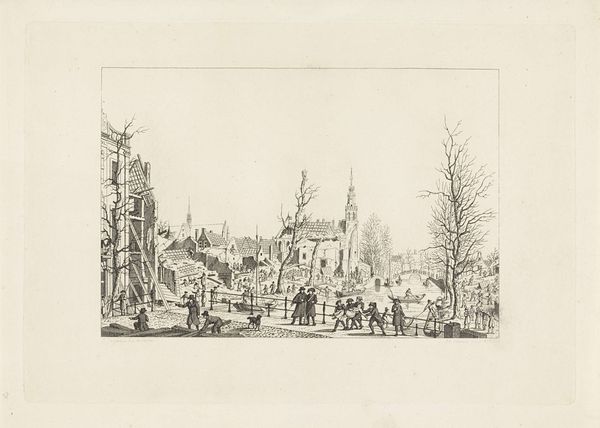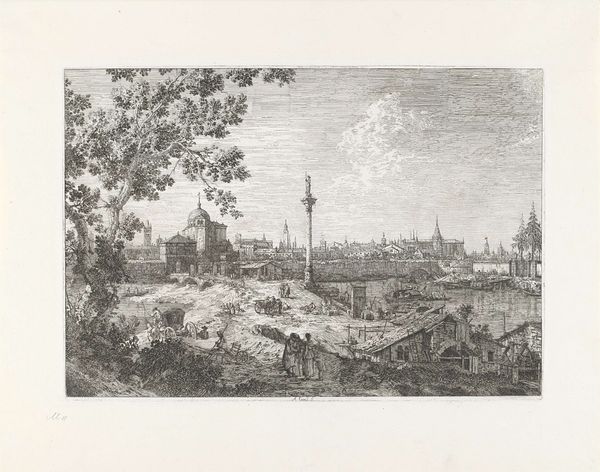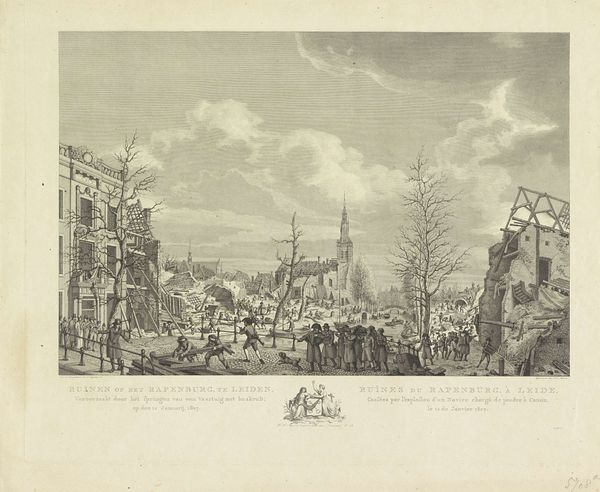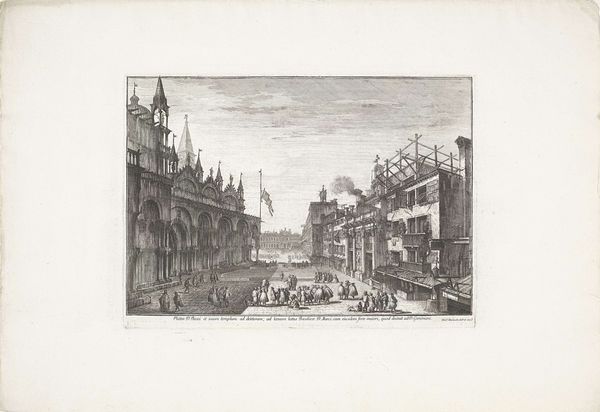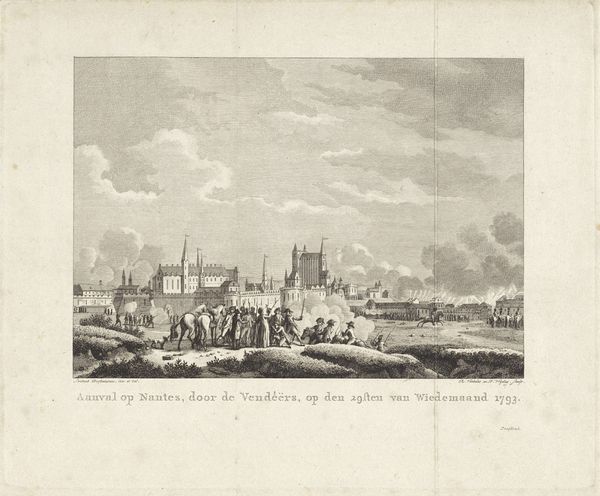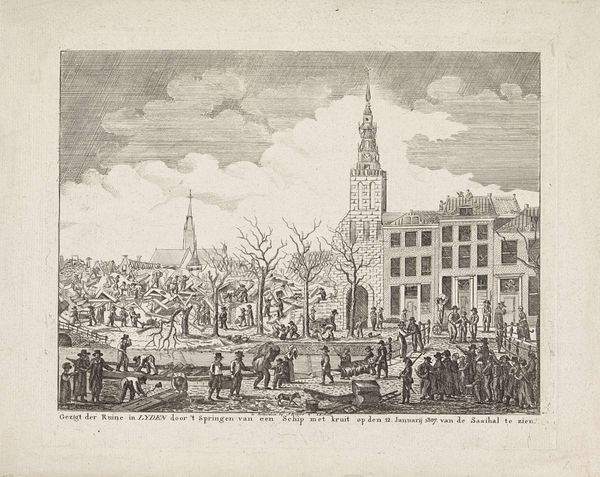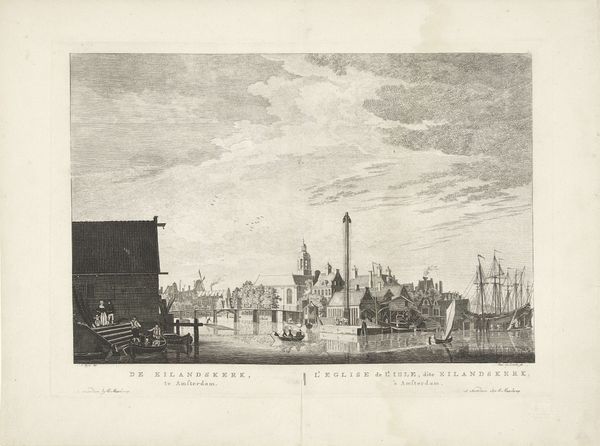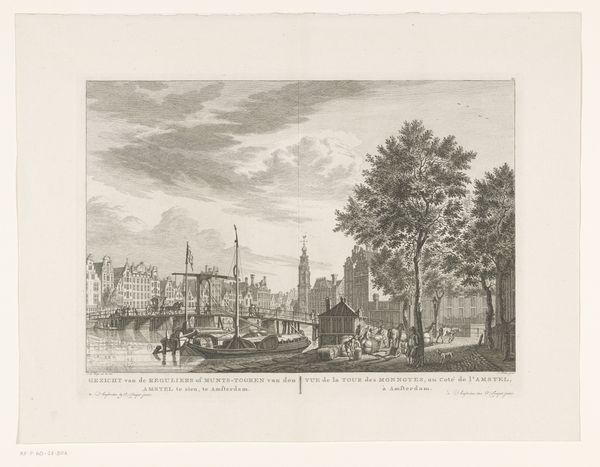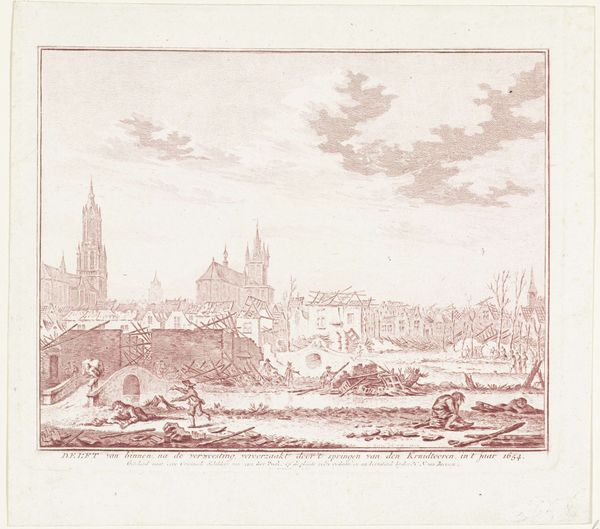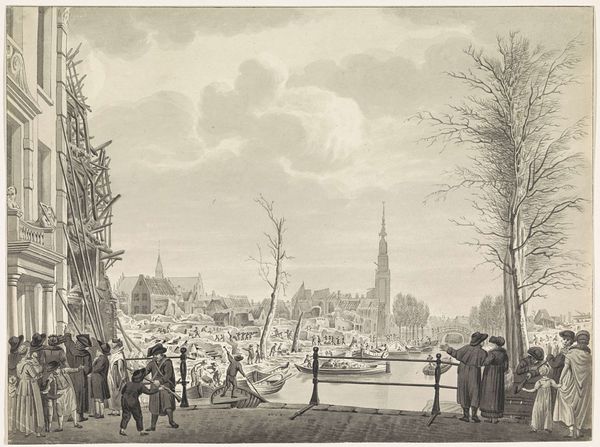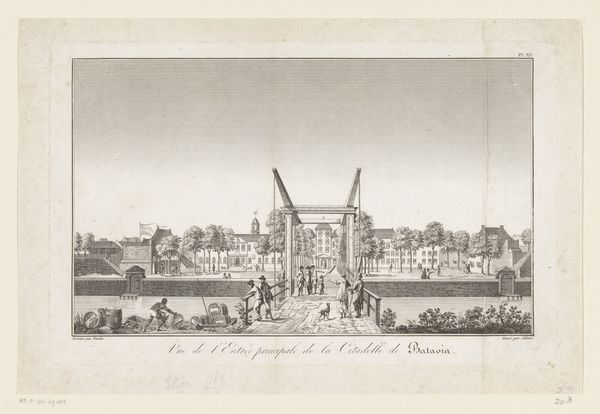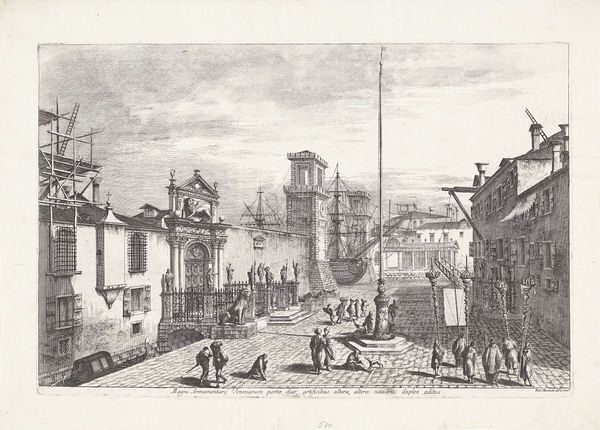
print, engraving
#
aged paper
#
dutch-golden-age
# print
#
light coloured
#
old engraving style
#
landscape
#
personal sketchbook
#
romanticism
#
cityscape
#
engraving
Dimensions: height 232 mm, width 337 mm
Copyright: Rijks Museum: Open Domain
Curator: This delicate engraving before us is titled "Ruïnes op het Rapenburg te Leiden na de ramp, 1807," created by Jacob Ernst Marcus in 1807. It resides in the Rijksmuseum's collection. It’s quite striking, wouldn’t you agree? Editor: Haunting is the first word that comes to mind. There's a real rawness to it. The sky itself seems heavy, pressing down on the scene of destruction. Look at those skeletal trees—they feel like witnesses to the catastrophe. Curator: Indeed. The 'ramp' in the title refers to the Leiden gunpowder disaster of 1807. Marcus captures the aftermath on the Rapenburg canal, once a grand area, now a landscape of ruins. He was quite moved by the disaster, you see. It stirred something in him. Editor: The visual language is fascinating. Ruins, of course, carry immense symbolic weight – broken empires, faded glory, the relentless march of time. The contrast between the damaged buildings and the figures actively rebuilding... it’s a powerful tension. They're already hauling timbers! Curator: Precisely! The artist seems interested in ideas of resilience, perhaps even a spark of hope amid desolation. He frames the people engaged in mending their lives – literally rebuilding the structures. Editor: Those bare trees feel like very deliberate choices. Trees often represent life, knowledge, connection to the earth. But here, stripped bare, they seem to mirror the rawness of the human experience: loss, but also perhaps endurance, a quiet strength that will eventually bring new growth. I notice the faces in the crowd; so many in the process of reestablishing routine. Curator: You picked up on that, yes. There’s a sense of everyday life stubbornly pushing through tragedy. What resonates with me, after seeing the work for so long, is how we return. Despite devastation, our instinct is to salvage, to reconstruct. Even to start anew. The old and the new. Editor: It’s a beautifully rendered study in human fragility and the spirit that simply refuses to break. Looking at it has been really thought-provoking. Curator: For me as well, actually. The experience shows us what emerges from nothing; it leaves us pondering life itself.
Comments
No comments
Be the first to comment and join the conversation on the ultimate creative platform.
